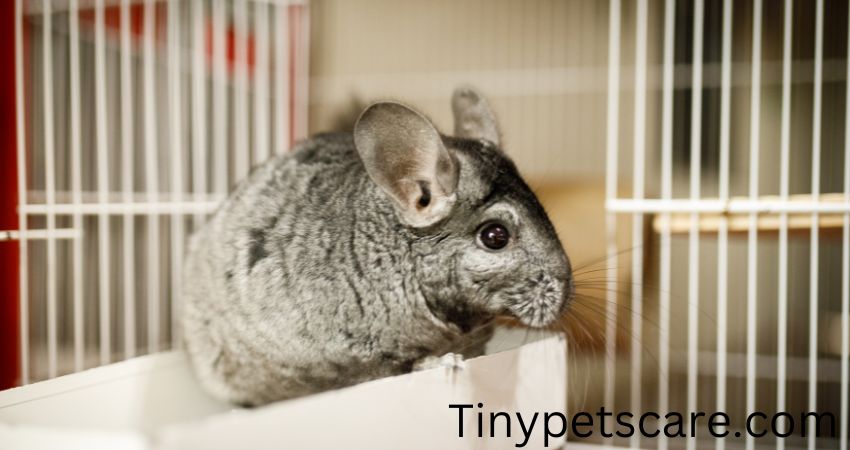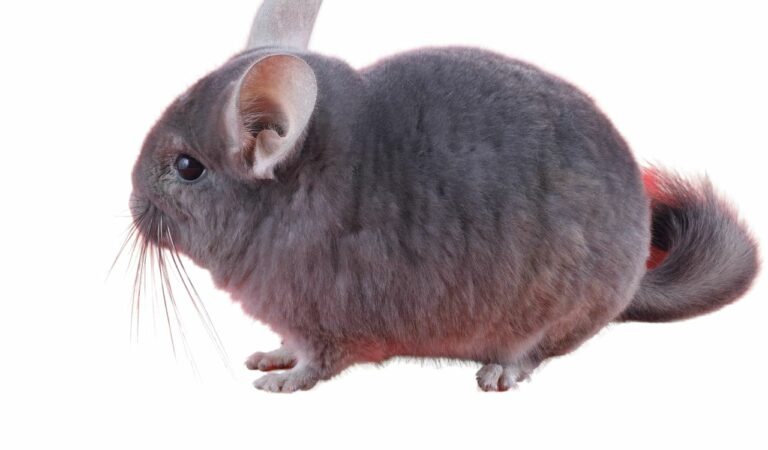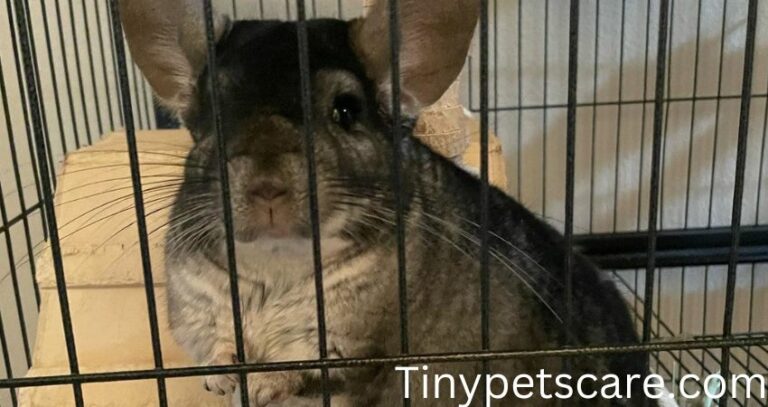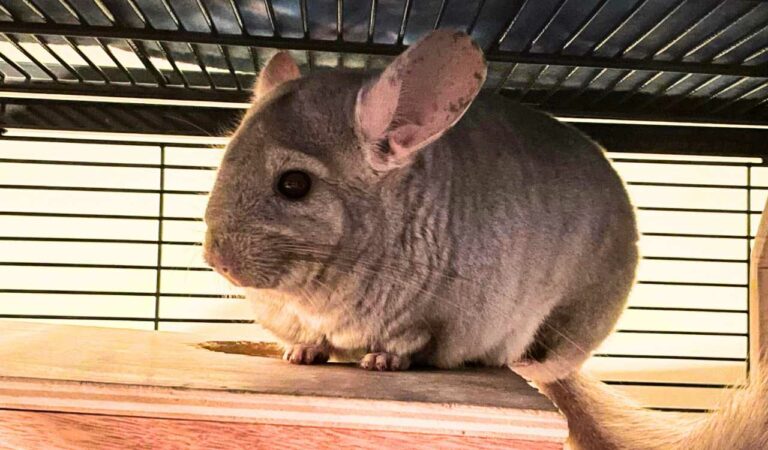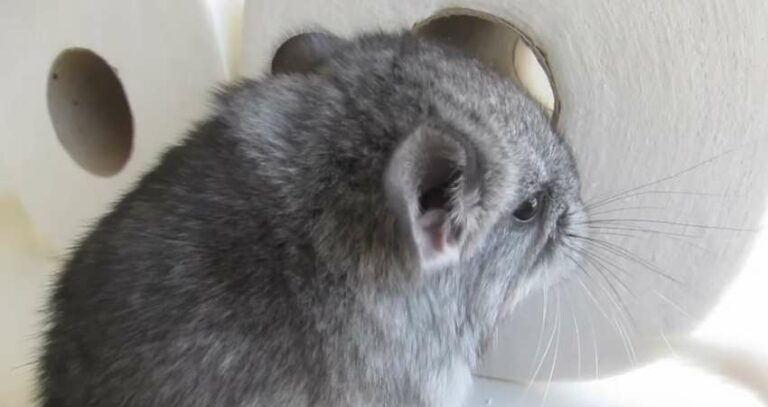Can Chinchillas Have Wire Bottom Cages? Facts Of Chinchillas Habitation
The majority of available cages use a wire base. These cages can be found at a reasonable price and require little maintenance. Of course, there are some downsides to it as well. Because of this, the owners of chinchillas also consider whether or not to buy this cage.
Yes, chinchillas can have wire bottom cages if it is not galvanized (zinc coated). Furthermore, reliable bedding is necessary when using this cage. However, it’s not the best option compared to the solid bottom cage.
You may now have other concerns and questions about the effects of the wire bottom cage on your chinchillas. To help you decide whether or not to keep your chinchillas in it, I shall describe it in great depth below.
Can Chinchillas Have Wire Bottom Cages?
You may ask can chinchillas use wire bottom cages? Yes, compared to plastic and wooden cages, a wired bottom cage that has been adequately prepared with safe flooring is the superior choice. As you know, chinchillas have a tendency to gnaw; here, a wire bottom cage can save you.
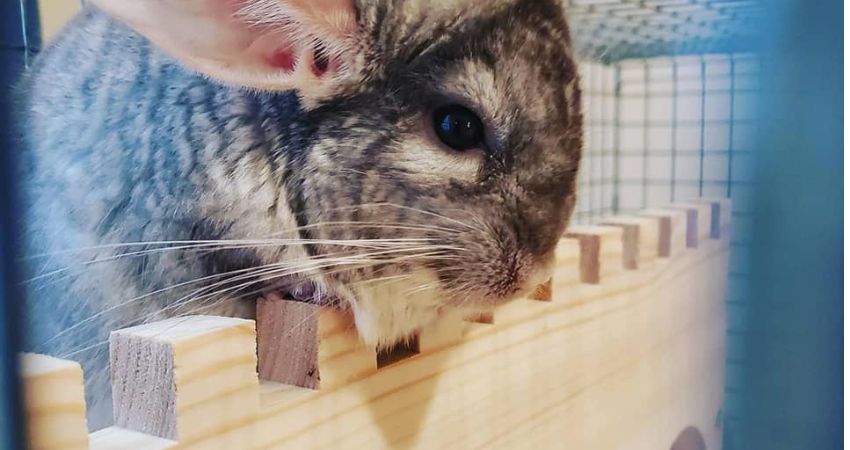
However, if the wire-base cage is not safely padded, then it might not be comfortable for the chinchillas, especially for babies, since they have very small and soft legs. In this case, a solid base (non-galvanized) metal cage can be a good option.
Remember, only the smaller gap wire bottom cage is habitable for your chinchillas. To make things clear, take a look at the chart-
| Types of wire bottom cage | Gap measurement | Habitable or Non-habitable | Requirement |
| Strip down cage | Above 1” cm | Non-habitable for chinchillas | To make it habitable, a lot of modification is required to lessen the gap. |
| Birds’ special wire bottom cage | 0.5” cm – 1” cm | Habitable | Safe padding is required |
| Standard wire bottom cage | 0.2” cm – 0.5” cm | Habitable | Padding is not required, but if you can, it would be great. |
| Customized wire bottom cage | 0.1” cm – 0.5” | Habitable | Depends on the cage. |
So, before putting your chinchillas in a wire bottom cage, ensure the gaps are not too big. And, of course, prepare the cage with proper padding as necessary.
How To Prepare A Wire Bottom Cage For Chinchillas?
A chinchilla cage with a wire bottom can be made livable in several ways. Obviously, the cage must have safe padding. But, before adding any bedding to your chinchilla’s cage, you must prepare the wire bottom. This will help to prevent rusting and prolong the life of your cage.
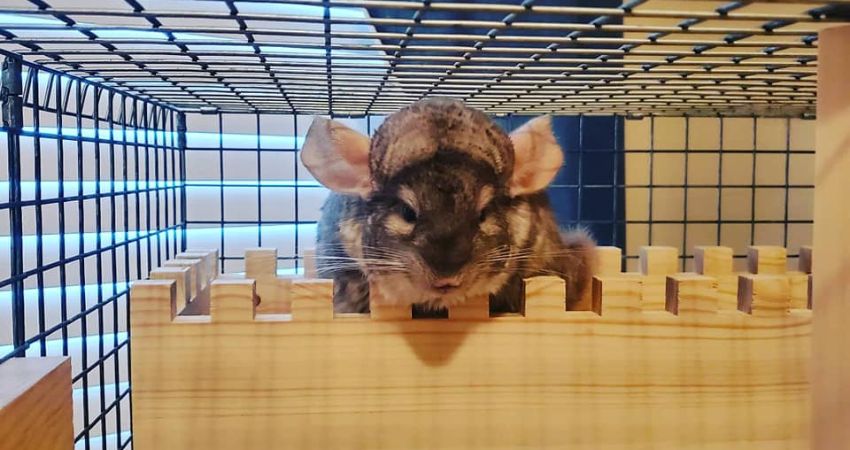
First, remove any sharp edges from the wire using pliers. Second, cover the wire with a layer of hardware cloth. This will provide a barrier between the wire and the bedding and help keep your chinchilla’s nails trimmed.
Finally, add a layer of bedding material. Here, you may use wood shavings, like kiln-dried pine or aspen. However, I recommend using Carefresh ultra, as it is soft and absorbent.
Once you have prepared the wire bottom, you can add bedding and toys to your chinchilla’s cage.
Are Wire Bottom Cages Bad For Chinchillas?
As I mentioned above, wire bottom cages are not the best option. That is because it has some downsides, for which choosing a wire bottom cage can be bad for chinchillas. These downsides are-
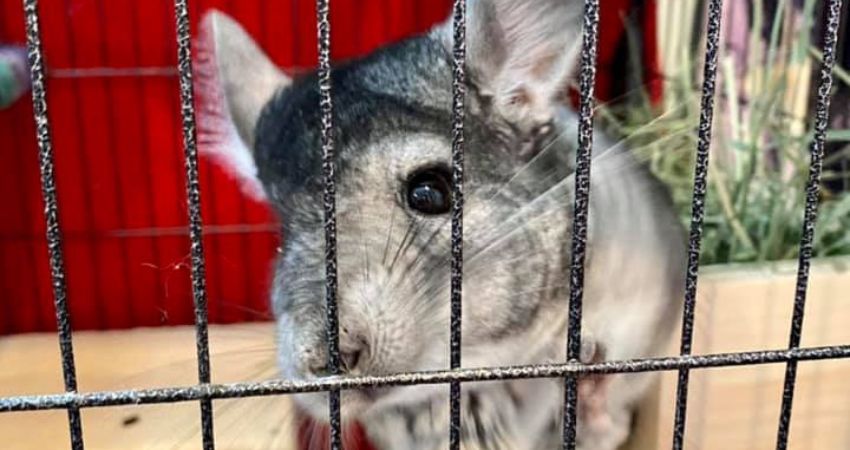
Galvanized wire:
Chinchillas shouldn’t be kept in cages with galvanized or zinc-coated wire. This is due to the fact that chinchillas tend to put anything they can get their mouths on into their mouths, including poisonous wire. So, make sure the wire metal isn’t galvanized.
Wires’ gap:
If the gaps in the wires are big, it becomes tough for chinchillas to walk. Chinchillas have short legs, and when they walk on such wire bottoms, it can have a negative impact on them. The wire can cut into their feet and legs, leading to infection. Make sure the gap of wires is not more than .5″ cm.
Lack of insulation:
The wire gap means the cage isn’t well insulated. Cages of this sort are uninhabitable during the winter or in other cold climates. In this case, bottom layering is mandatory. Moreover, you can purchase a cage cover.
Considering all these, if you tell me to choose one cage which is both comfortable and safe for chinchillas, I will choose the solid base cage. That is because such cages are comfortable where they can walk freely and have proper insulation.
But, if you have a wire bottom cage and have made it safe for your chinchilla to use with proper preparation, then it is okay to use it. Just make sure that it is not galvanized or has small gaps in the wire.
How To Choose A Cage For Your Chinchilla?
Your chinchilla’s home is essential, and you want to make sure you choose the right cage. There are a few things you need to consider when choosing a cage.
First, you need to decide if you want a wired bottom cage or a solid bottom cage. A wire bottom cage, while better than an open-top cage, is not as good as a solid bottom cage. A solid bottom cage, while more expensive, is the better choice for your chinchilla.
Second, you need to make sure the cage is big enough. Chinchillas need plenty of space to move around, and their home should be at least 2 ft by 2 ft by 2 ft (for one).
Third, you must ensure the cage’s wire bottom is properly prepared.
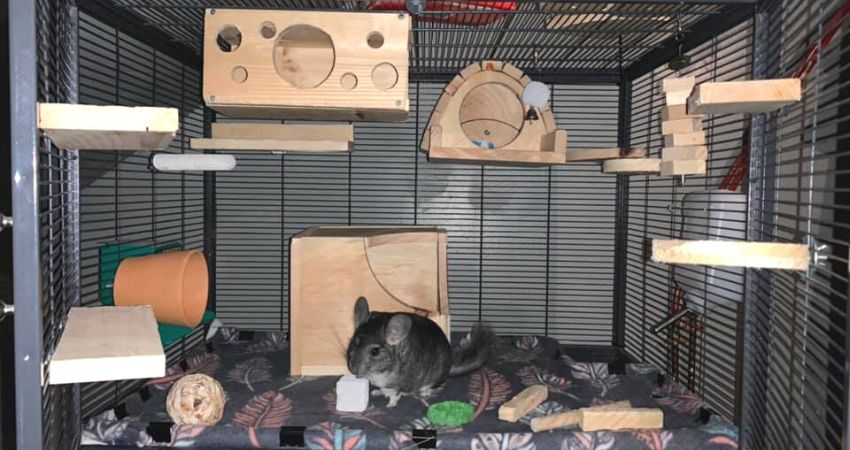
Fourth, ensure the cage is in a cool, dry place where your chinchilla will be safe from drafts. Remember, chinchillas do best when kept in a dry environment with ideal temperatures of between 60° and 75° Fahrenheit and moisture levels under 60%.
Finally, provide plenty of toys and chew items for your chinchilla to keep them entertained. By following these guidelines, you can choose the perfect cage for your chinchilla.
Which Types Of The Cage Should You Avoid For Chinchillas?
When it comes to chinchillas, cages are not one size fits all. Smaller cages may be more affordable and take up less space, but they can limit your chinchilla’s movement and make it challenging to add enrichment items like toys and branches.
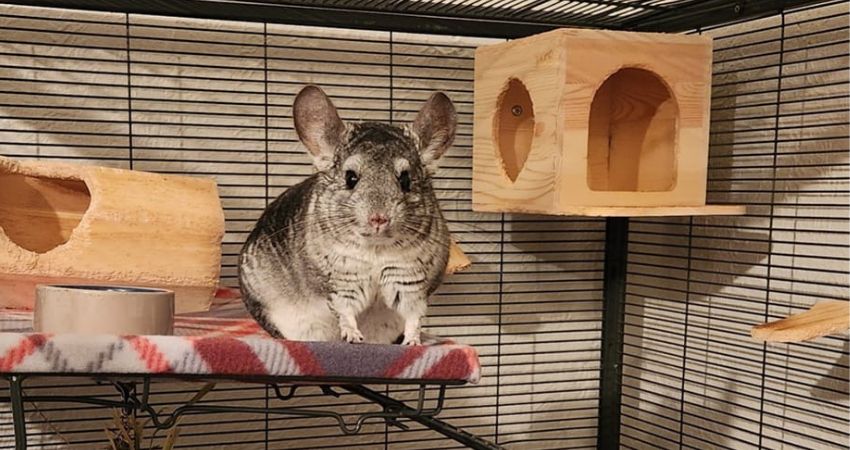
On the other hand, chinchillas can get stressed out in cages that are too big, and it can be hard to keep the environment clean. In general, experts recommend choosing a cage that is at least 24 inches long, 24 inches wide, and 24 inches tall. This gives your chinchilla plenty of room to move around and exercise.
Additionally, avoid cages with unpadded wire floors, as these can damage your chinchilla’s delicate feet. Instead, opt for a cage with a solid floor or a layer of soft bedding.
By considering these factors, you can choose a cage that will provide your chinchilla with a comfortable and safe environment.
Where Should You Place The Chinchillas’ Cage?
There are some factors you should consider before placing your chinchillas’ cage. One factor to consider when choosing a location for your chinchilla’s cage is ventilation. Chinchillas are very sensitive to heat and need a cool, well-ventilated environment in order to stay healthy.
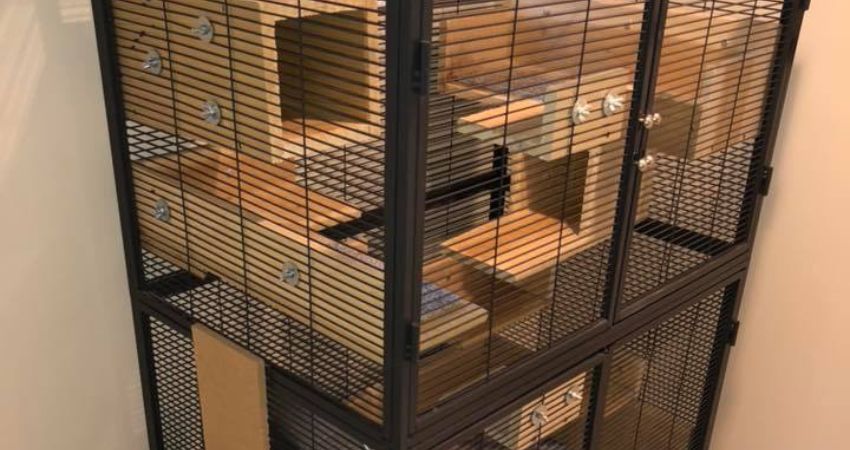
Another consideration is noise level. Chinchillas are relatively quiet animals but can be startled by loud noises. For this reason, it’s best to avoid places like the laundry room or kitchen, where appliances or other noise-makers might disturb them. Instead, choose a quiet location and out of the way.
The third factor to consider is your chinchilla’s line of sight. These animals are social creatures and do their best when they can see and interact with their human companions regularly.
Therefore, placing their cage in a busy room like the living room or family room is ideal. Considering these factors, you can choose the perfect location for your chinchilla’s cage.
Can chinchillas live in plastic cages?
While chinchillas are able to live in a variety of different types of cages, plastic cages are generally not recommended. This is because plastic cages tend to be much smaller than metal or wire cages, and chinchillas need plenty of space to exercise and play.
Additionally, plastic cages often have small wire doors that can injure a chinchilla’s delicate feet. Besides, chinchillas have a habit of digging all around. Plastic cages may not be able to withstand this behavior and can break easily.
Furthermore, plastic cages can retain heat more efficiently than other cages, leading to discomfort or heat stroke for your pet.
For all these reasons, avoiding plastic cages is best when choosing a home for your chinchilla.
With That Said
Hopefully, you understand the pros and cons of using wire bottom cages for chinchillas. If you’re considering this option, think about the safety and comfort of your pet. Properly prepare the cage before putting your chinchillas into the wire bottom cage. However, in general, solid base cages may be a better choice.
